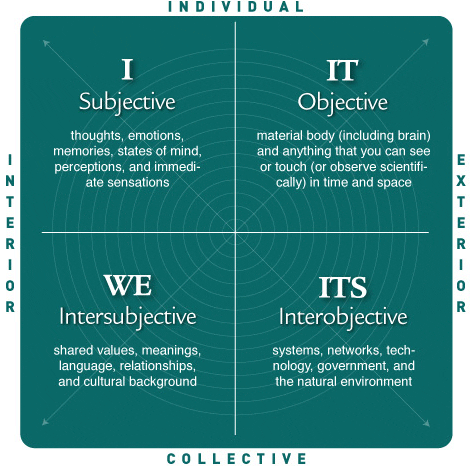Understanding the Narcissistic Family Scapegoat: A Four-Quadrant Map to Healing and Recovery
As a registered social worker and therapist in Toronto, Ontario, with over 14 years in social work and five years in private practice, I often work with clients navigating the painful role of the family scapegoat in narcissistic dynamics. If you've ever felt cast as the "problem child" in your family—carrying constant anxiety, self-blame, and the sense that your legitimate suffering goes unacknowledged—this framework is for you. Drawing from Ken Wilber's integral four-quadrant model, we can finally create a clear map of the chaos, revealing hidden patterns and illuminating a path forward.
Ever felt lost in an emotional landscape without a guide? The chaos of being the scapegoat isn't random—it's structured. Using Wilber's holistic approach, we'll explore four territories: your inner world (the "I"), observable behaviors (the "It"), the family's invisible culture (the "We"), and the systemic structures (the "Its"). This comprehensive view addresses complex PTSD, toxic shame, and intergenerational trauma, empowering scapegoats to reclaim their authentic self.
The Inner World of the Scapegoat (Upper Left: The "I")
This is the deeply personal territory where your private thoughts, feelings, and sense of self reside—the heart of the scapegoat experience. Growing up in chronic emotional danger fosters complex PTSD, as trauma expert Pete Walker describes in Complex PTSD: From Surviving to Thriving. It's not one event, but sustained neglect and abuse that erodes safety.
At the core lies toxic shame: the narcissistic parent projects their unfaceable worthlessness onto you, the child, who absorbs it as a fundamental flaw. This manifests as constant self-blame, a profound belief in being unlovable, buried grief for the loving family you deserved, and distorted identity from years of gaslighting. Trusting your own perceptions becomes nearly impossible.
Yet, as psychotherapist Julie L. Hall (often collaborating with experts like Jay Reid) notes, this pain forges profound strengths: heightened empathy, room-reading intuition, truth-seeking drive, and deep self-reflection. These survival skills become superpowers in recovery.
The Family's Invisible Culture (Lower Left: The "We")
Zooming out, we enter the collective interior—the unspoken emotional atmosphere everyone breathes but never names. Bowen Family Systems Theory describes this as the "undifferentiated family ego mass": an emotional fusion where individuality threatens the system, breeding reactivity and anxiety.
Tension is managed through emotional triangles—pulling in the scapegoat to deflect marital or parental conflict. The problem shifts from "us" to "you." Philosopher Sam Vaknin calls this a "shared fantasy," where the narcissist crafts a fictional narrative of perfection, assigning roles (golden child, enabler, scapegoat) to sustain it. Truth is sacrificed; the fantasy—and avoiding rage—is everything.
Visible Patterns and Structures (Upper Right & Lower Right: The "It" and "Its")
Here, we observe concrete behaviors and repeatable cycles. The narcissistic abuse cycle—idealization (love-bombing), devaluation, discard—creates trauma bonds via intermittent reinforcement, keeping you hooked.
Structurally, you're the "identified patient," splitting divides siblings (all-good vs. all-bad), and Bowen's multi-generational transmission passes toxicity down until someone interrupts it. These predictable patterns maintain the system, localizing complex trauma in the scapegoat.
The Path to Healing: Integrating All Four Quadrants
You've mapped the territory—now navigate toward freedom. Recovery begins with safety: low or no contact to halt abuse. Confrontation rarely brings closure; that's internal work.
Jay Reid's framework is transformative: (1) Make sense of what happened—educate yourself to know it wasn't your fault; (2) Move to safety—distance and safe relationships; (3) Live in defiance—reclaim your authentic self.
True healing is integral: process C-PTSD and shame inwardly, shift behaviors like people-pleasing outwardly, dismantle the shared fantasy culturally, and break inherited patterns systemically. As Bowen and Carl Jung teach, the destination is differentiation and individuation—separating from fusion to become fully yourself.
With this map, the question shifts: How will you now become yourself?
What quadrant resonates most with your experience? Share in the comments—I read every one.
Ready to heal? Download the Reports for The Scapegoat & Narcissistic Abuse Recovery Course + 45pg Healing Toolkit here: https://blaketherapy.ca/the-ultimate-toolkit


